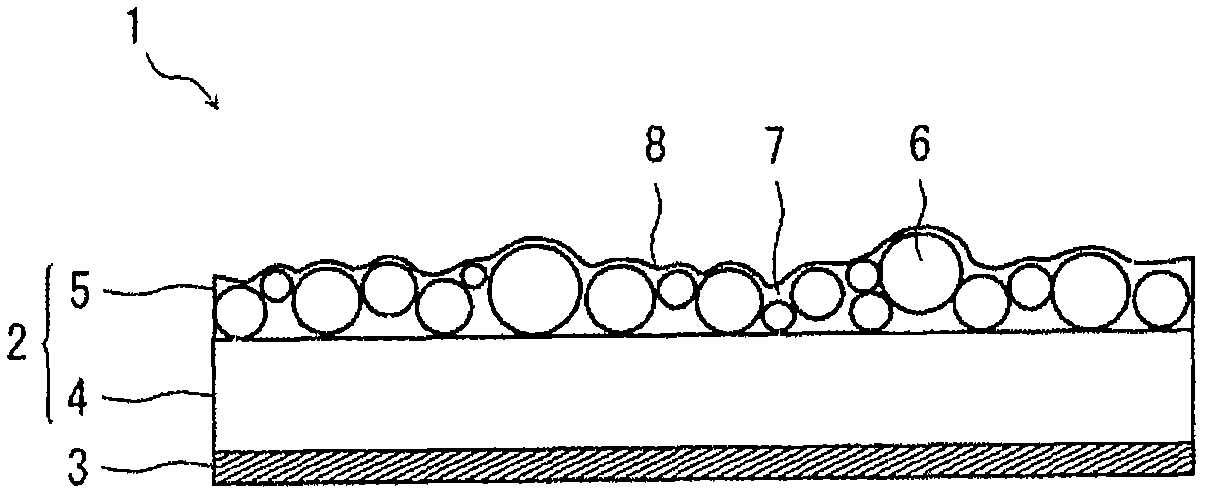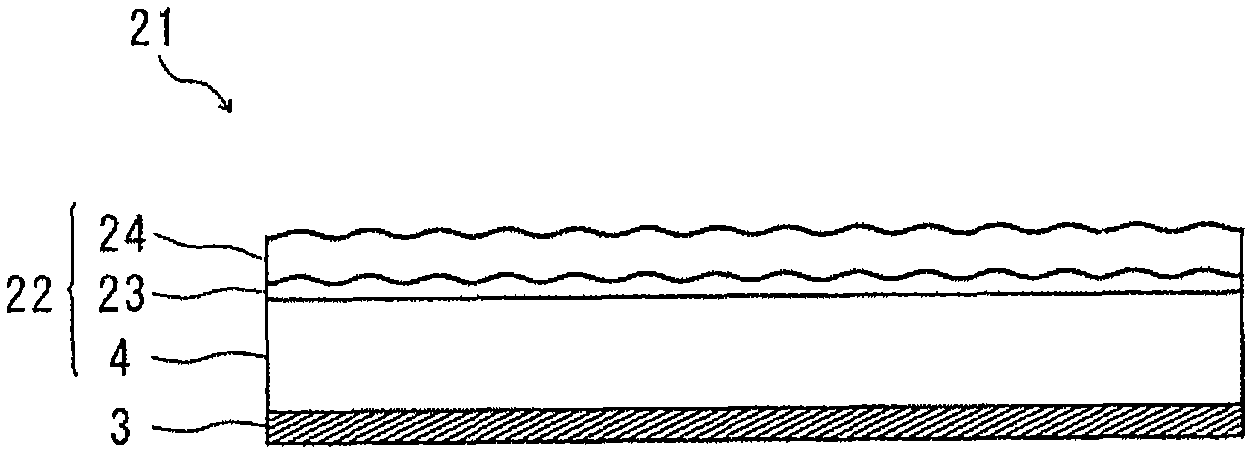Heat dissipation sheet for the back face of solar battery module, and solar battery module using the same
A technology of solar cells and heat sinks, applied in photovoltaic modules, circuits, photovoltaic power generation, etc., can solve the problems of not helping to improve the life of the solar cell module heat dissipation effect, unable to correspond to the solar cell module, and reducing the life of the solar cell unit, etc. Achieve power generation efficiency, improve power generation efficiency, and prolong life
- Summary
- Abstract
- Description
- Claims
- Application Information
AI Technical Summary
Problems solved by technology
Method used
Image
Examples
Embodiment Construction
[0025] figure 1 The heat dissipation sheet 1 for the back surface of the solar cell module is provided with a heat dissipation film 2 and an adhesive layer 3 laminated on one side of the heat dissipation film 2 .
[0026] The heat dissipation film 2 includes a base material layer 4 on which the above-mentioned adhesive layer 3 is laminated on one side, and a heat dissipation layer 5 laminated on the other side of the base material layer 4 .
[0027] The base material layer 4 is formed with a synthetic resin as a main component. The synthetic resin of the main component of the base material layer 4 is not particularly limited, and examples thereof include polyolefin-based resins, fluorine-based resins, poly(meth)acrylic-based resins, polycarbonate-based resins, polyester-based resins, Polyamide-based resin, polyimide-based resin, polyamide-imide-based resin, polyarylphthalate-based resin, polysiloxane-based resin, polysulfone-based resin, polyphenylene sulfide-based resin, po...
PUM
 Login to View More
Login to View More Abstract
Description
Claims
Application Information
 Login to View More
Login to View More - R&D
- Intellectual Property
- Life Sciences
- Materials
- Tech Scout
- Unparalleled Data Quality
- Higher Quality Content
- 60% Fewer Hallucinations
Browse by: Latest US Patents, China's latest patents, Technical Efficacy Thesaurus, Application Domain, Technology Topic, Popular Technical Reports.
© 2025 PatSnap. All rights reserved.Legal|Privacy policy|Modern Slavery Act Transparency Statement|Sitemap|About US| Contact US: help@patsnap.com



